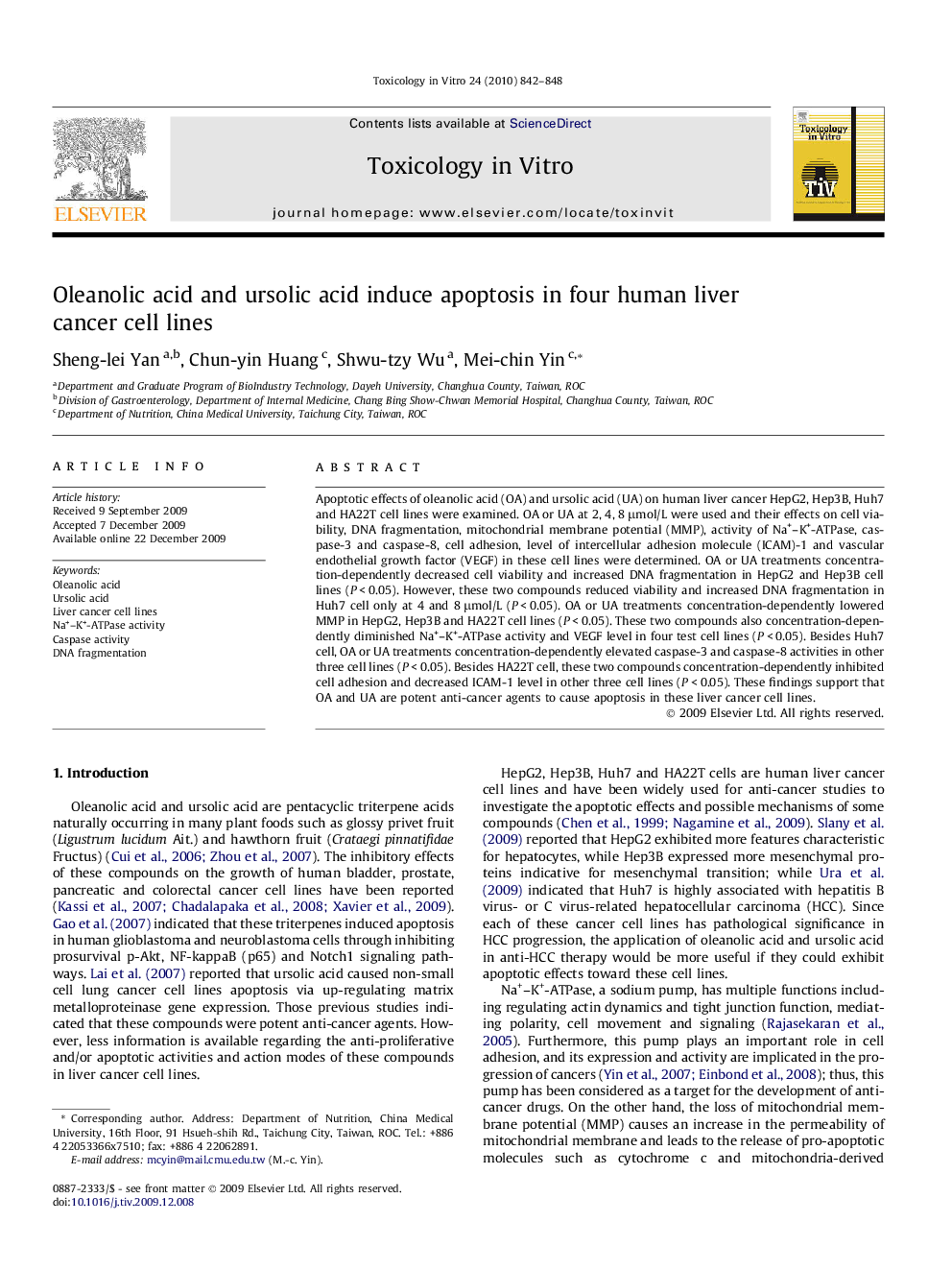| Article ID | Journal | Published Year | Pages | File Type |
|---|---|---|---|---|
| 2602941 | Toxicology in Vitro | 2010 | 7 Pages |
Apoptotic effects of oleanolic acid (OA) and ursolic acid (UA) on human liver cancer HepG2, Hep3B, Huh7 and HA22T cell lines were examined. OA or UA at 2, 4, 8 μmol/L were used and their effects on cell viability, DNA fragmentation, mitochondrial membrane potential (MMP), activity of Na+–K+-ATPase, caspase-3 and caspase-8, cell adhesion, level of intercellular adhesion molecule (ICAM)-1 and vascular endothelial growth factor (VEGF) in these cell lines were determined. OA or UA treatments concentration-dependently decreased cell viability and increased DNA fragmentation in HepG2 and Hep3B cell lines (P < 0.05). However, these two compounds reduced viability and increased DNA fragmentation in Huh7 cell only at 4 and 8 μmol/L (P < 0.05). OA or UA treatments concentration-dependently lowered MMP in HepG2, Hep3B and HA22T cell lines (P < 0.05). These two compounds also concentration-dependently diminished Na+–K+-ATPase activity and VEGF level in four test cell lines (P < 0.05). Besides Huh7 cell, OA or UA treatments concentration-dependently elevated caspase-3 and caspase-8 activities in other three cell lines (P < 0.05). Besides HA22T cell, these two compounds concentration-dependently inhibited cell adhesion and decreased ICAM-1 level in other three cell lines (P < 0.05). These findings support that OA and UA are potent anti-cancer agents to cause apoptosis in these liver cancer cell lines.
